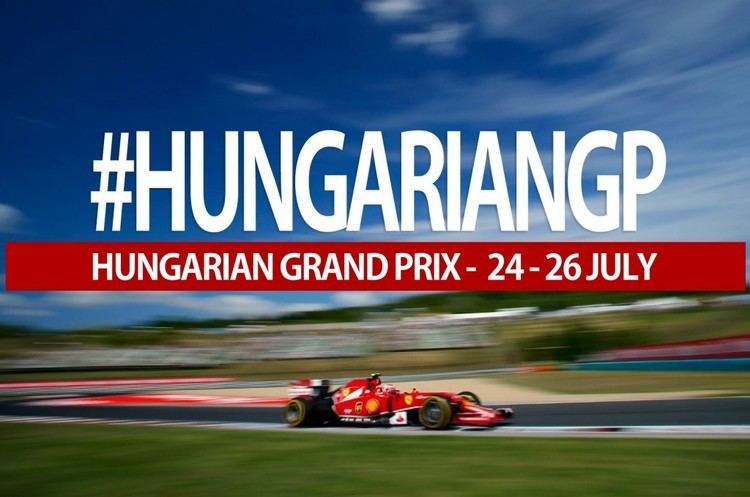Circuit length 4.381 km (2.722 mi) First held 1936 | Laps 70 Number of times held 31 | |
 | ||
Race length 306.663 km (190.560 mi) Instances 2016 Hungarian Grand Prix, 2015 Hungarian Grand Prix, 2014 Hungarian Grand Prix, 2011 Hungarian Grand Prix, 2010 Hungarian Grand Prix | ||
F1 circuit guide hungarian grand prix
The Hungarian Grand Prix (Hungarian: Magyar Nagydíj) is a motor race held annually in Hungary. Since 1986, the race has been a round of the FIA Formula One World Championship.
Contents
- F1 circuit guide hungarian grand prix
- The history of the hungarian grand prix
- Origins
- Hungaroring
- Sponsors
- Repeat winners drivers
- Repeat winners constructors
- Year by year
- References
The history of the hungarian grand prix
Origins
The first Hungarian Grand Prix was held on 21 June 1936 over a 3.1-mile (5.0 km) track laid out in Népliget, a park in Budapest. The Mercedes-Benz, Auto Union, and the Alfa Romeo-equipped Ferrari teams all sent three cars and the event drew a very large crowd. However, politics and the ensuing war meant the end of Grand Prix motor racing in the country for fifty years.
Hungaroring
A major coup by Bernie Ecclestone, the 1986 Hungarian Grand Prix was the first Formula One race to take place behind the Iron Curtain. Held at the twisty Hungaroring in Mogyoród near Budapest, the race has been a mainstay of the racing calendar. Run in the heat of a central European summer, it also held the distinction of being the only current Grand Prix venue that had never seen a wet race up until the 2006 Hungarian Grand Prix. The first Grand Prix saw 200,000 people spectating, although tickets were expensive at the time. Today, the support is still very enthusiastic, particularly from Finns.
Due to the nature of the track, narrow, twisty and often dusty because of under-use, the Hungarian Grand Prix is associated with processional races, with sometimes many cars following one another, unable to pass. Thierry Boutsen demonstrated this perfectly in 1990, keeping his slower Williams car in front of champion-elect Ayrton Senna, unable to find a way by. The secret to a winning performance at Hungaroring, as well as qualifying well, is pit strategy, best demonstrated in 1998, where Michael Schumacher's Ferrari team changed his strategy mid-race before Schumacher put in one of his finest drives to build up a winning margin after all the stops had been made. Passing is a rarity here, although the 1989 race saw a famously bullish performance from Nigel Mansell in the Ferrari, who started from 12th on the grid and passed car after car, finally taking the lead in splendid opportunist style when Ayrton Senna was baulked by a slower runner. The circuit was modified slightly in 2003 in an attempt to allow more passing.
Other notable occasions in Budapest include first Grand Prix wins for Damon Hill (in 1993), Fernando Alonso (in 2003, the first Grand Prix winner from Spain, who also became the youngest ever driver (at the time) to win a GP), Jenson Button (in an incident-packed race in 2006), and Heikki Kovalainen (in 2008, who also became the 100th winner of a World Championship race). Also noteworthy is Damon Hill's near-win in the technically inferior Arrows-Yamaha in 1997, when his car lost drive on the last lap causing him to coast in second place, and Lewis Hamilton coming within six seconds of winning in 2014, despite starting the race from the pit lane.
In 2001, Michael Schumacher equaled Alain Prost's then record 51 Grand Prix wins at the Hungaroring, in the drive which also secured his 4th Drivers' Championship which also matched Prost's career tally.
The 2006 Grand Prix was the first to be held here in wet conditions. Button took his first victory from 14th place on the grid.
At the 2013 Hungarian Grand Prix, it was confirmed that Hungary would continue to host a Formula 1 race until 2021. The track was completely resurfaced for the first time in early 2016, and it was announced the Grand Prix's deal was extended for a further 5 years, until 2026.
Sponsors
Repeat winners (drivers)
Only includes World Championship events
Repeat winners (constructors)
Teams in bold are currently competing in Formula One.
Year by year
A pink background indicates an event which was not part of the Formula One World Championship.
